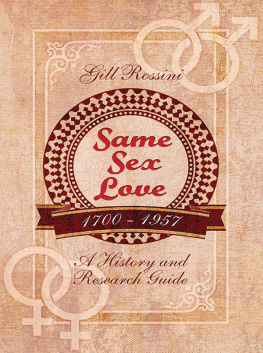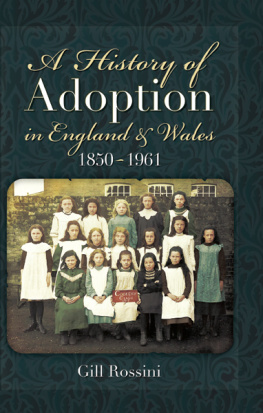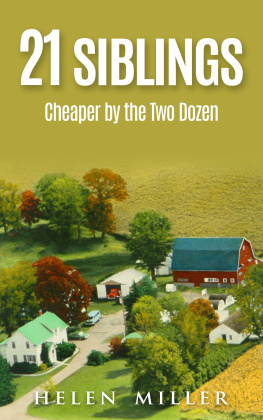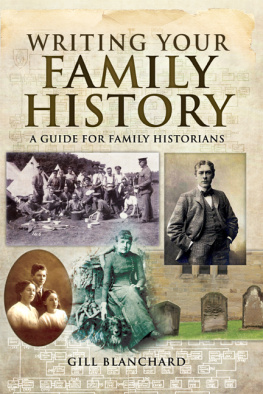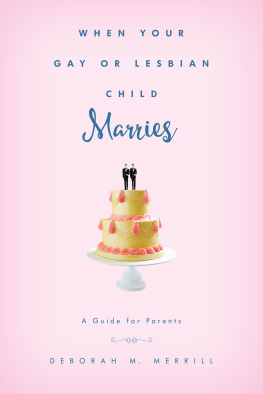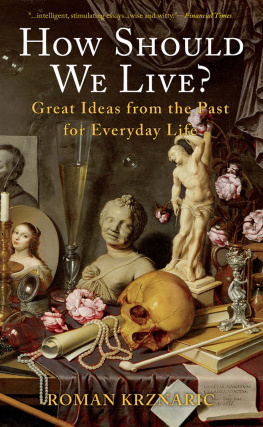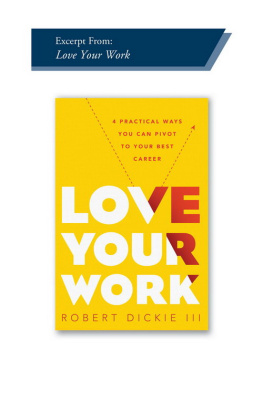
Same Sex Love, 17001957: A History and Research Guide
For Gill and Johnny, with all my love Thank you for believing in me
Same Sex Love, 17001957: A History and Research Guide
By
GILL ROSSINI

First published in Great Britain in 2017 by
Pen & Sword History
an imprint of
Pen & Sword Books Ltd
47 Church Street
Barnsley
South Yorkshire
S70 2AS
Copyright Gill Rossini, 2017
ISBN 978 1 47385 423 9
eISBN 978 1 47385 424 6
Mobi ISBN 978 1 47385 425 3
The right of Gill Rossini to be identified as Author of this work has been asserted by her in accordance with the Copyright, Designs and Patents Act 1988.
A CIP catalogue record for this book is available from the British Library.
All rights reserved. No part of this book may be reproduced or transmitted in any form or by any means, electronic or mechanical including photocopying, recording or by any information storage and retrieval system, without permission from the Publisher in writing.
Pen & Sword Books Ltd incorporates the Imprints of Pen & Sword Books Archaeology, Atlas, Aviation, Battleground, Discovery, Family History, History, Maritime, Military, Naval, Politics, Railways, Select, Transport, True Crime, Fiction, Frontline Books, Leo Cooper, Praetorian Press, Seaforth Publishing, Wharncliffe and White Owl.
For a complete list of Pen & Sword titles please contact
PEN & SWORD BOOKS LIMITED
47 Church Street, Barnsley, South Yorkshire, S70 2AS, England
E-mail:
Website: www.pen-and-sword.co.uk
Acknowledgements
The subject of this book has been a part of my life and, latterly, my teaching since I first discovered Radclyffe Hall in the 1980s, and so my thanks and gratitude must go back a very long way. I have drawn on so many archives, resources and fellow historians it would be hard to single any one out, and also rather unfair. So to all of you, I give my sincere thanks for your help and support.
More recently, this book would not now be available in print without the wonderful support of no less than three Pen and Sword editors. To Jen Boyle: thank you for believing in this project from the start and giving me the chance to prove myself as a trustworthy custodian of a sensitive subject with my history of adoption; without your initial faith in me this book would not have happened. To Eloise Hansen, who succeeded Jen at Pen and Sword, a huge thanks for taking up the samesex proposal and guiding it towards a commission. Finally, to Heather Williams, my current editor, my enormous gratitude for your patience and understanding at a very difficult time for me personally, and for sticking with me; thank you also for your sage advice and guidance, and for being my professional rock. Also to Karyn Burnham, sincere thanks for your expert help with the draft, and for making it an altogether more professional piece of work.
To my students in Wales, Cheshire, and Lancashire, who have been the most wonderful, lively, inspiring, and erudite collective muse any historian could ever have: my deepest gratitude to you all for joining me on the fabulous journey that is the study of history. I have always told you all that we learn together and as a team, and so we have. I am honoured to have you as colleague historians.
And to my partner Gill, and my son Johnny; my unending thanks and love for allowing me to dream and for supporting me in my endeavours. Dreams have no value if you have no-one to share them with.
List of Illustrations
Queen Anne, a portrait by Michael Dahl (1659-1743).
Sarah, Duchess of Marlborough, an engraving by Godfrey Kneller. ( Wellcome Foundation )
The Pillory from William Dwight Whitneys, The Century Dictionary and Cyclopedia: An Encyclopedic Lexicon of the English Language. ( New York, The Century Co., 1889 )
The Ladies of Llangollen,Lithograph by R J Lane, 1832, after Mary Leighton. ( Wellcome Foundation )
The Arse Bishop Josling a Soldier, by George Cruikshank, 1792-1878.
Two female friends. Unattributed illustration from a womens magazine of the late nineteenth century.
Late nineteenth century cabinet photograph, cross dressing female and another person. From the studio of W. Lang Durban, Fulham, London. ( Authors collection )
Detail from the cover of Strange Lust by A M L Hesnard, (English translation by J. C. Summers, United States, American Ethnological Press, 1933). ( Authors collection )
Front cover , Illustrated Police News , 9 October 1880.
Oscar Wilde on tour in America. Unattributed illustration in Frank Leslies Illustrated Newspaper , 21 January 1882. Title: Oscar Wilde, the apostle of aestheticism. An aesthetic reception. ( Library of Congress collection )
Two unnamed soldiers of the First World War, photographer unknown. Printed as a postcard. ( Authors collection )
Photograph in postcard format of a group of British nurses, early twentieth century. ( Authors collection )
Ivor Novello. Undated photograph, published by Bain News Service. ( Library of Congress Images Collection )
Introduction
The Purpose of This Book
This book is about the love of those who were attracted to their own gender, the challenges many of those people faced, and how they tried to live their lives within the constraints of the era and society into which they were born. Here, you will meet builders, soldiers, sailors, housewives, artists, mothers and fathers, drunkards, policemen, drivers, celebrities, shopkeepers, prostitutes, in fact, pretty much every type of person and job you can think of. They all, by and large, tried to go about their business like everyone else with one slight difference: they loved people of the same gender as their own. Many such stories are told here. You will meet people who lived in obscurity, and yet some names you will recognise; some even are household names, or were in their heyday. Other people were dragged from obscurity by their sexuality and became public property, if only for a brief moment. I have included a selection of better-known people to illustrate the point that there were a large number of male and female homosexuals who, being public figures, were lavished with respect and held in awe, but still rarely broadcast their same-sex loves to anyone other than their close circle. Everyone was affected by the repressive attitudes and laws of society, whoever they were.
Thankfully, bureaucracy on the whole treated most people in certain historical periods equally. No matter what your sexuality, you were expected to fill in your census form and become part of the census enumerators returns. It was compulsory to have your birth, marriage, and death recorded, and to comply with all registration laws. You needed to work hard and stay out of the workhouse, and if you got into trouble or made a scene, you could expect to end up in the local newspaper. If you broke the law, you would be punished although some people were punished more harshly because of their choice of partner.
Essentially, because many of the people in this narrative are pretty ordinary, they crop up in the same ways as anyone else in the records. However, sometimes people had cause to disguise their life in some way to maintain that veneer of respectability; this happened in all walks of life and all levels of society. Those in the establishment had to be an example to their inferiors; and the working and middle classes were under great pressure to be respectable and ordinary, and not to stand out as different.
Next page
